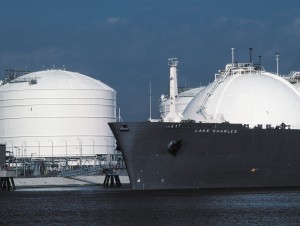 Natural gas futures were higher during early trade in Europe today, ahead of the US weekly inventories levels report. Analysts suggest another sizable gain for nat gas stocks, while weather patterns project more moderate weather for the US in the mid term.
Natural gas futures were higher during early trade in Europe today, ahead of the US weekly inventories levels report. Analysts suggest another sizable gain for nat gas stocks, while weather patterns project more moderate weather for the US in the mid term.
Front month natural gas futures, due in August, added 0.21% at the New York Mercantile Exchange to trade for $4.366 per million British thermal units at 9:25 GMT today. Prices ranged from $4.372 to $4.351 per mBtu. The contract dropped 2.20% yesterday, reaching a monthly low of $4.338 per mBtu, and so far this week the blue fuel has lost about 1.2%.
The US Energy Information Administration (EIA) will post its weekly reading on natural gas inventories for the seven days ended June 27 later today. NatGasWeather.com predicts a gain of 99-103 Billion cubic feet (Bcf), which would be 20-25 Bcf more than the 5-year average gain for the week.
The government agency revealed a 110 Bcf jump in stocks in last weeks report. A wide array of estimates were cast ahead of the log, ranging from 93 to 107 Bcf. NatGasWeather.com had predicted a 102-107 Bcf increase, while Tim Evans, an energy analyst at Citi Futures in New York, gave a 93 Bcf figure for Bloomberg.
Total gas held in underground storage hubs was still 27.4% lower than last year’s levels during the comparable period. However, the EIA has suggested gains will continue to be above-average, and that most likely inventories will be completely replenished ahead of winter heating season.
US weather report
NatGasWeather.com reported earlier today, that the high pressure build-up over much of the western and southern US will keep temperatures relatively high, reaching above 100 in many places. A cooler weather system will track through the Midwest and Northeast, bringing showers and clouds and dragging readings down a few degrees, before another surge on high pressure later in the seven-day period. Tropical Cyclone Arthur remains impressive and could drive some market fear, though the high pressure over the Midwest should push the storm offshore. Cooling demand is projected to be moderate-to-high.
In the 8-14 day outlook, NatGasWeather.com projects a neutral trend for the US, with an upward bias. The southern and central, as well as the western states will be relatively warm for the whole period, with the northern and eastern states experiencing some cool early on, though following suit soon after. Thunderstorms will increase over the South and Southwest as the monsoon season begins due to hot temperatures and high humidities.
New York will be cloudy and will see a few strong thunderstorms today, with readings ranging 72-87 degrees Fahrenheit, a few above average. Tomorrow will also be quite rainy, though temps will drop some 10 degrees, before a warm and sunny weekend. Chicago will be sunny, though chilly today, with readings some 15 degrees below average, at 56-71 degrees. July 4 will still be quite cooler than normal, with highs in the mid 70s at most, while the weekend will see climbing temps with plenty of sun.
Down South, Houston will see mostly cloudy, though warm weather today, with temperatures between 74 and 95 Fahrenheit, a few above average. Several thunderstorms are expected in the area. Friday, July 4, will be stormy and moderately warm, while the weekend is expected to bring normal temps and plenty sun. Over on the West Coast, Los Angeles will be cooler than normal today, with readings a few below average at 64-79 degrees. Temps will climb over the following days for a sunny and moderately-warm July 4.
Technical view
According to Binary Tribune’s daily analysis, in case natural gas for settlement in August penetrates the first resistance level at $4.431 per million British thermal units, it will encounter next resistance at $4.506. If breached, upside movement will probably attempt to advance to $4.552 per mBtu.
If the energy source drops below its first resistance level at $4.310 per mBtu, it will see support at $4.264. If the second key support zone is breached, the power-station fuel’s downward movement may extend to $4.189 per mBtu.





